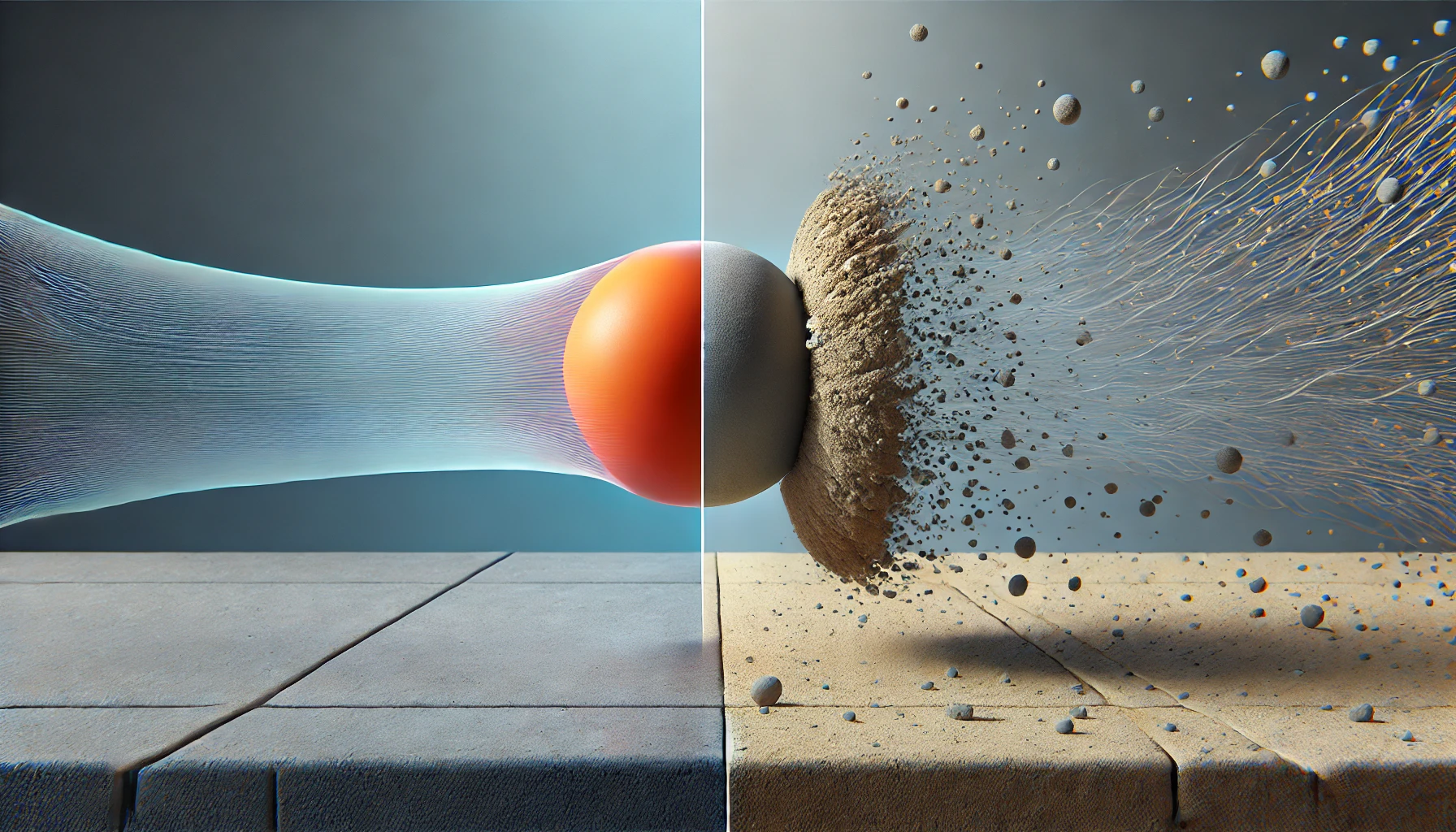Introduction Bouncing balls provide a captivating demonstration of energy conservation and transfer. This phenomenon, familiar from playgrounds to physics labs, illustrates fundamental principles like elastic and inelastic collisions. These principles are pivotal in understanding how energy is conserved and transformed. This article delves into the dynamics of bouncing balls and the roles these collisions play in energy behavior.
Understanding Energy Conservation Energy conservation is a fundamental concept in physics stating that the total energy in an isolated system remains constant. Although it may change forms. When balls bounce, they showcase this principle vividly. Kinetic energy (movement energy) is converted to potential energy (stored energy) and back again.
Elastic vs. Inelastic Collisions The nature of a collision between objects—in this case, a ball and the ground—determines how energy is transferred and conserved:
- Elastic Collisions: In an elastic collision, objects bounce back without losing their kinetic energy to other forms, like heat or sound. When a ball is dropped and bounces back to its original height, it undergoes nearly an elastic collision. Both kinetic and potential energy are conserved.
- Inelastic Collisions: In contrast, inelastic collisions occur when colliding objects lose some kinetic energy. This energy is typically converted into heat or sound, resulting in lower rebound heights. Most real-world ball bounces are partially inelastic. They don’t return to their original height, indicating energy loss.
Factors Affecting Bouncing Efficiency Several factors influence how effectively a ball conserves energy during a bounce:
- Material: The composition of a ball affects its elasticity. Rubber balls, for example, are more elastic and bounce higher than balls made of clay.
- Surface: The type of surface on which a ball bounces also impacts energy conservation. Hard surfaces like concrete allow better energy transfer compared to softer surfaces like grass.
- Air Resistance: Although generally minor, air resistance can affect the bounce by slowing the ball slightly.
Practical Implications Understanding the dynamics of bouncing balls isn’t just theoretical. It has practical applications in sports, material science, and safety engineering, where energy absorption and restitution are crucial.
Conclusion The simple act of a ball bouncing can reveal much about the principles of physics, particularly energy conservation and collision dynamics. Whether for educational purposes or practical applications, the insights gained from observing bouncing balls are both valuable and widely applicable. Check out also the ball lightning.

